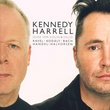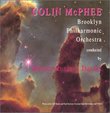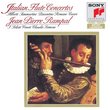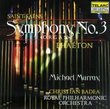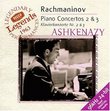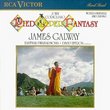| All Artists: Franz Schmidt, Neeme Järvi, Chicago Symphony Orchestra Title: Schmidt: Symphony No. 2 In E Flat Major Members Wishing: 0 Total Copies: 0 Label: Chandos Release Date: 10/28/1992 Genre: Classical Styles: Historical Periods, Modern, 20th, & 21st Century, Symphonies Number of Discs: 1 SwapaCD Credits: 1 UPC: 095115877920 |
Search - Franz Schmidt, Neeme Järvi, Chicago Symphony Orchestra :: Schmidt: Symphony No. 2 In E Flat Major
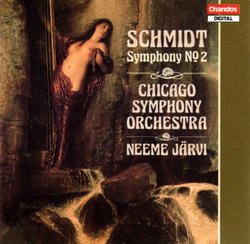 | Franz Schmidt, Neeme Järvi, Chicago Symphony Orchestra Schmidt: Symphony No. 2 In E Flat Major Genre: Classical
Schmidt (1874-1939) is an interesting musical figure in that he is a curious bridge from the 19th century to the 20th in Austro-Hungarian (or Czechoslovakian) music. After Mahler's death in 1911, Schmidt was considered t... more » |
Larger Image |
CD DetailsSynopsis
Amazon.com Schmidt (1874-1939) is an interesting musical figure in that he is a curious bridge from the 19th century to the 20th in Austro-Hungarian (or Czechoslovakian) music. After Mahler's death in 1911, Schmidt was considered to be Vienna's leading composer (even though Schoenberg lived nearby). Schmidt's music is ornately Romantic and has about it a fin de siecle ambience, a sense of the old aristocratic orders languishing in their twilight years. The Symphony 2 (of 1913) does not have a hint of the Great War to come. It's written in the grand manner of Strauss, but with a touch of Bruckner for structure. --Paul Cook Similar CDs
Similarly Requested CDs
|
CD ReviewsAn Astounding Finale Shuji Ogino | Boston, MA USA | 03/16/2001 (5 out of 5 stars) "Franz Schmidt was an approximate contemporary of Mahler and he actually played in an orchestra, where Mahler conducted. But he is not as famous as Mahler. His music unquestionablly is more German, influenced by Brahms, Wagner and possibly Bruckner. This second symphony has full of romantic legacy, more readily accessible, than e.g. his fourth symphony, for who like classical or romantic music. The finale is just amazing. The famous brass of the Chicago symphony roared to the climax and to the end. I respect Neeme Jarvi for recording such a wonderful, but rarely-performed piece." Schmidt in Straussian E-Flat! Thomas F. Bertonneau | Oswego, NY United States | 11/23/2000 (5 out of 5 stars) "The four symphonies of Franz Schmidt (1874-1939) constitute an unexpected development in twentieth century music. Although they qualify as "conservative" in their idiom (indebted to Brahms while not uninfluenced by Wagner on the one hand and Reger on the other), they demonstrate an ingenious filling of old bottles with new wine. In the first two symphonies (1899 and 1913), the forms are baroque and early-classical. Thus, the First Movement of Symphony No. 1 follows the "form" of a French Overture (as in Bach's suites), complete with the dotted rhythms, but the harmonies might be those of Bruckner. Symphony No. 2, from the war years, wraps two sonata-allegro movements around a large-scale variations on a languorous Hungarian-sounding theme, mostly in slow tempi, but incorporating a faster scherzo. Schmidt calls on a large orchestra, making requirements similar to those stipulated by Richard Strauss in his biggest scores: Five clarinets, eight horns, four trumpets. The massive instrumentation matches the heroic key of the symsphony, E-Flat Major, the same as in Beethoven's Third and Strauss's "Ein Heldenleben." Listeners will often think of Strauss during the fifteen minutes or so of the First Movement, with its upward-surging motifs in the brass, dominated by the horns. (The quirky thought that flits through my mind as the movement plays is that this is what Bruckner would have sounded like if he had decided to write a Strauss tone-poem.) In the long Second Movement, the known reference is Max Reger, who specialized in gigantic theme-and-variation structures for orchestra. Schmidt liked this form: He wrote a free-standing "Variations on a Hussar's Song" for orchestra, a Variations on a Theme by Beethoven for Piano and Orchestra, and a Chaconne for organ, later orchestrated. The whole of the Fourth Symphony (1935) is a kind of variations. Woodwinds at first dominate the Second Movement, lending a wind-band, or outdoor, flavor to the music. The Scherzo ascends into some impressive, good-humored heroics. The Third Movement begins slowly but builds up to a vindication of the Symphony's assertive character. Järvi wins the competition among the three or four contending interpretations of this score by virtue of availability (Chandos does a good job of keeping its issues in the catalogue); but Music and Arts still lists a 1958 recording with Dmitri Mitropoulos and the Vienna Philharmonic (in spectacular monophonic high-fidelity, as I here solemnly attest); the Mitropoulos disc also contains a sumptuous "Verklärte Nacht" by Schoenberg. So go with Järvi, but pick up the Mitropoulos recording also if you can find it. [P.S. I see that this CD was issued eleven years ago. I add to my recommendation the tag, "better late than never!"]" I was there... Steven Antler | 05/03/2007 (5 out of 5 stars) "My wife and I were in attendance -- all the way up there in Orchestra Hall's gallery -- the night this performance was recorded.
I remember we looked over the programme and wondered to each other "Franz WHO? What's this all about? Drat!" We were in for a boring evening it seemed. Yet roughly three minutes into the first movement (the second major brass crecendo I believe) my wife whispered "Hey -- this is great!" And so it was for the rest of the performance. Breathtaking. The CD captures that night's sound of Orchestra Hall/CSO perfectly. Schmidt may not be for everyone, but he deserves a much wider audience. Get this CD if you want to (a) discover a new and somewhat offbeat musical personality and/or (b) show off your audio equipment to your friends by letting them hear the full glory of pre-renovation Orchestra Hall." |

 Track Listings (3) - Disc #1
Track Listings (3) - Disc #1

